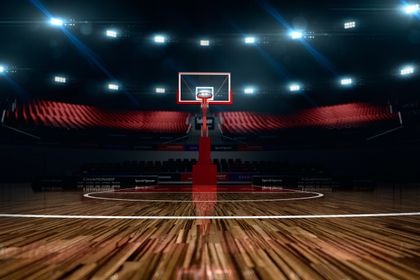Stephen Lopez is the Chief of Police at New Mexico State University in Las Cruces, which has about 20,000 students and 4,000 faculty across several campuses. Chief Lopez has been a police officer for 32 years, and also served as adjunct faculty at NMSU for 14 years, teaching in the Public Health Sciences and Criminal Justice Departments as a College Assistant Professor. In this interview with Swiftlane, Chief Lopez discusses how the NMSU team was able to reopen campus safely, what the biggest physical security and access control challenges have been, and how they plan to keep students and faculty safe in the months ahead.
First, congratulations on opening and remaining open! What needed to happen for a safe return to campus?
Stephen Lopez: A number of things. Fortunately we started back in 2009 with H1N1. That gave us a good leg up on the COVID crisis. The police department had a training module on dealing with an airborne virus. We were able to quickly roll that out with just a slight tweak to make it particular to COVID-19, and we already had respirator fit-testing arranged. We had stockpiles of N95 masks and hand sanitizer, as well, so that really helped us.
We also realized that we could not completely “close” the campus down. We have hundreds of students who would have had no place to go, or their homes don’t have the necessary infrastructure to support online learning. So we needed to stay open at some level and ensure that they had the necessary services. Even though most students left in March, we still had over 700 students living in dormitories on campus. Now we’re back up to just under 3,000 people living on campus.
You’re just 35 miles north of El Paso, Texas. A spike in COVID cases has recently been reported there. Is that affecting you?
It is causing us lots of concern. We’ve had positive cases show up over the last two weeks, mostly, it appears, related to what we call the FFNs: family, friends and neighbors. That comes from socializing off campus. We’re not seeing any outbreaks starting from the campus. Almost all our cases tie back to Labor Day with people getting together in their home communities, and then the subsequent spread after that.
COVID has hit higher ed particularly hard. What gave you the confidence to open?
We looked at our demographics. Our undergraduate median age is 26. Having that older demographic helped us make decisions and target our messages. Incoming students could look to older students who were more likely to be engaging in safe practices. As we brought people back into the dormitories, anybody traveling from out of state had to do a 14 day quarantine, and we offered free, convenient testing as part of it. We literally sent medical staff door to door to conduct the testing. Offering those tests allowed us to figure out how much virus was trying to come into our population. We found 4% of the incoming students were positive either from where they were coming from or from exposure during travel to the university. So that initial quarantine was really important and is going to be important again for us in the spring. People are going to be going home for holidays and breaks and they’ll be exposed again to the FFN group.
On the subject of medical checks, what do the health checks and screenings look like?
The key has been creating online systems for both screenings and for COVID-19 test registration. We worked with the Department of Health starting in May, and we agreed we needed a mechanism better than just knocking on doors. We came up with a system that allows us to print out barcodes in advance for the test kits so we don’t have to pass paper forms back and forth. People signed up online, and could scan a QR code to quickly and easily get to the registration site. It really simplified things. Working together, we got it down to where we could do as many as 500 full PCR (polymerase chain reaction) tests an hour. That’s really, really good. Thanks to recent partnerships for analyzing the samples, we can get results by 8 a.m. the next day.
Do you have specific facilities for people who test positive and for people who haven’t tested positive but have been exposed to someone who has?
We have a lot of single rooms, so we have students quarantine in place whenever possible. But we planned for a possible surge. There are 500 individual houses that are part of our family housing area on campus. We made 40 of them fallback quarantine locations, but we haven’t had to use them yet.
What if an infected student shares a bathroom with an uninfected student?
We figured out if you leave the ceiling fans on 24/7 in the bathroom, then clean it before and after you use it, there seems to be more than enough air flow to keep things safe. We encourage communicating with suite mates about who will use the bathroom at specific times, when possible. As a result, we haven’t found indications of spread from sharing of bathrooms thus far.
Let’s turn to the learning environment. You have a hybrid approach to classes. How did you decide which ones would meet in person?
We looked at which classes absolutely needed to have a face to face component, like chemistry labs, clinical experiences for nursing students, and welding classes. We prioritized those and looked at our classroom environments to see how we could rearrange furniture or mark off seats so that we could ensure safe distancing.
Have you taken advantage of outdoor spaces?
We have eight tents up right now, mostly used by our music department. A choir or an orchestra playing instruments like woodwinds expel a lot of air. Music students frequently use these outdoor spaces to practice in. Our facilities and services team is also putting up another dozen smaller tents to provide outdoor relaxation areas for students. We also did one other important thing outdoors. We gridded off a huge area of turf next to our Student Union and created a set of rectangles that are seven feet by ten feet. We use these to do outdoor programming like movies and bingo for our students so they can get out of Zoom land for at least a little while. It was key to keeping their compliance and allowing them to feel supported by the institution, which kept them from going into the community, looking for things to do.
Speaking of compliance, what mandates are in place?
There is a mask mandate at the state level and we certainly adhere to that. The governor just prohibited groups of greater than five from gathering. And, of course, we enforce social distancing — six feet, preferably more. We discovered that some people thought six feet was one arm’s length, so we had to educate them as well.
Are people complying?
We think what we’re doing is working. Our overall positivity rate is less than half of what our surrounding county is. And our contact tracing shows that cases are coming from the community, not the campus.
What does physical security and access control on campus look like now, and how did COVID change it?
We had big dreams before COVID hit that have been altered. Fortunately, our electronic access control and camera project was already underway. Most of our dormitories already had it, and the pandemic accelerated that process. That’s allowed us to monitor for door propping, and the cameras help housing staff make sure visitors aren’t coming into the buildings. Dorms are restricted to the students who live there. We’ve also increased access control at our 178 academic and research buildings. We used to leave them open until the last class finished at night. Now we lock the buildings at 5 p.m., but students with a later class can use their IDs to get in. Their cards are automatically enabled when they register for classes that meet in person.
You’ve mentioned a tremendous number of moving pieces in dealing with COVID. How did the university get everyone to buy in?
The key is this was not done in a vacuum. We’ve got multiple teams that have come together to tackle various issues. We also took that approach off campus and partnered with businesses near the university. We understood that the businesses and students rely on each other. If something happened to the university that made us shut down, that would impact the businesses and vice versa. A “whole community” approach was instrumental.
Besides the musical activities requiring special measures, are there other activities or times of day that are particularly tricky, such as meal times?
Meal time is absolutely a concern. We have people who might come and go in and out of quarantine, and we have to watch their potential exposures to other people. So we set up “doorside” service. Our dining staff takes food to individual dorm rooms. Students can get whatever and however much they want, without having to leave their rooms. They can also do laundry through a concierge service. Another issue has been in our biology and chemistry labs. An instructor has to be closer than six feet from a student, say, if they’re going to look at a pipette and make sure that the clear liquid inside is at the correct level. So we issued face shields to wear over cloth masks. We haven’t had a single case from these classes despite very close contact.
In those cases, presumably faculty felt comfortable returning to campus. Have you had others who have refused or been reluctant?
Yes. Some faculty are in the older age groups or might have preexisting conditions. So we’ve allowed decisions on who teaches in person and who teaches online to be made at the individual academic department level. We’re starting to see some faculty wanting to get back onto campus and teach in person. They thought online teaching was going to be easier. Some are finding it’s a lot harder to stay connected and enthusiastic and to keep students engaged online.
For all that you’ve done and seen so for, what has been the biggest surprise?
Denialism. Some people don’t think the pandemic is real, or think it will just disappear after the election. Many of them are very intelligent people relying on questionable sources of information. We counter that with good, reliable information and have made some progress. The other big issue is fatigue. People are tired of doing the right thing and are pushing boundaries again. We are reemphasizing opportunities for safe get-togethers so we can keep people engaged and around others who are modeling safe practices.




